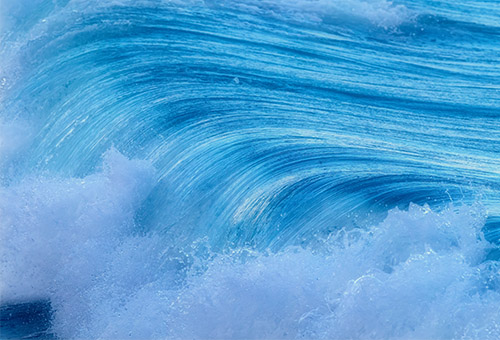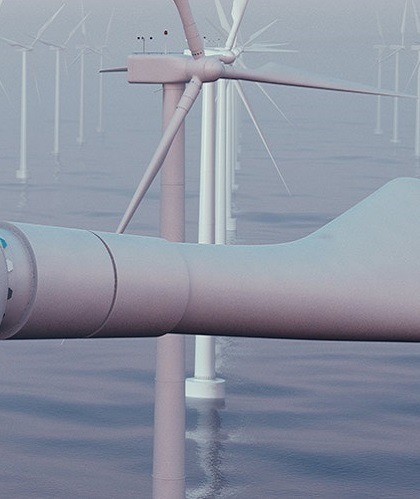The first patent aimed at exploiting wave energy was filed in 1799 in France. Two centuries on, technologies have progressed significantly and a whole host of different wave energy systems are in the process of being developed to convert this resource into electricity. What is the situation today?

DEFINITION OF WAVE ENERGY
Waves are generated by the wind passing over the surface of the sea. When these waves cover large distances, they form the swell. When this swell is converted into energy, this is known as wave power or wave energy.
Wave energy offers huge potential for the global energy mix. Some 71% of the earth’s surface is covered by seas or oceans! The World Energy Council estimates that 10% of global electricity demand could be covered thanks to wave energy.
However not all countries have the same potential: some regions, such as the North Atlantic, are particularly suitable for the recovery of wave energy. In Metropolitan France, the potential is estimated to be 40 TWh/year, mainly along the Atlantic coastline (10 to 15 GW).
HOW IS WAVE ENERGY RECOVERED?
The numerous systems currently under development have one thing in common: they aim to transform wave energy into electric energy using converters.
There are 4 main types of technology:
-
Oscillating water columns: the oscillation of water on the sea’s surface acts like a “piston”, pushing air into a chamber. This pressurized air flow mechanically drives turbines to produce electricity. Installations may be floating (in the sea) or fixed (on the coast). This technology is in the pre-commercial stage.
-
Overtopping devices: the waves break over artificial inclined ramps and fill raised reservoirs. The water drives a turbine, then returns to the surrounding sea. As with oscillating water columns, the installations may be offshore floating systems or fixed onshore devices. There are not many of these systems at present.
-
Floating devices: several floating segments joined together are aligned in the same direction as the wind, perpendicular to the waves, and held in place on the surface of the water by cables moored to the seabed. The waves cause the sequence of floating segments to oscillate, driving a turbine either directly or via a compressed hydraulic fluid. Systems of this type are at various stages of maturity.
-
Submerged systems: attached to the seabed, these use the oscillation of the water caused by wave surges to move submerged devices (flaps, floats, etc.). These then drive electric or hydraulic energy conversion systems (using a fluid that may be oil, sea water, etc.). A system of this type has been shown to be effective, having sent electricity to the grid for 24 consecutive hours.
ADVANTAGES AND DRAWBACKS OF WAVE ENERGY
Human interest in wave power did not come about simply because waves are abundant. Wave energy is also relatively easy to predict: the average levels of power available can be estimated 1 or 2 days in advance.
Wave power is a variable energy, but its rhythm differs from that of other variable energies, such as solar or wind power. This complementarity could help balance the electricity network.
However, it is still hampered by a number of drawbacks:
-
A difficult environment: fatigue, storms, etc. The equipment needs to withstand sometimes extreme conditions while remaining very reliable. The challenges to be overcome are numerous!
-
Acceptability that may be problematic: integration into the landscape for shoreline installations, disruption of wildlife, marine traffic and fishing for offshore installations, etc.,
-
A high cost, related not only to initial investments in equipment, but also to installation on-site and connection to the grid for offshore installations, maintenance, etc. Ultimately, electricity produced using wave energy remains too expensive at present.
In the long term, it is essential for production costs to fall below €100/megawatt hour (compared to €200 to €300 at present) in order to be competitive with other electricity production methods. To achieve this reduction, it will be necessary to control manufacturing, installation and maintenance costs.






 Our expertise >
Our expertise >